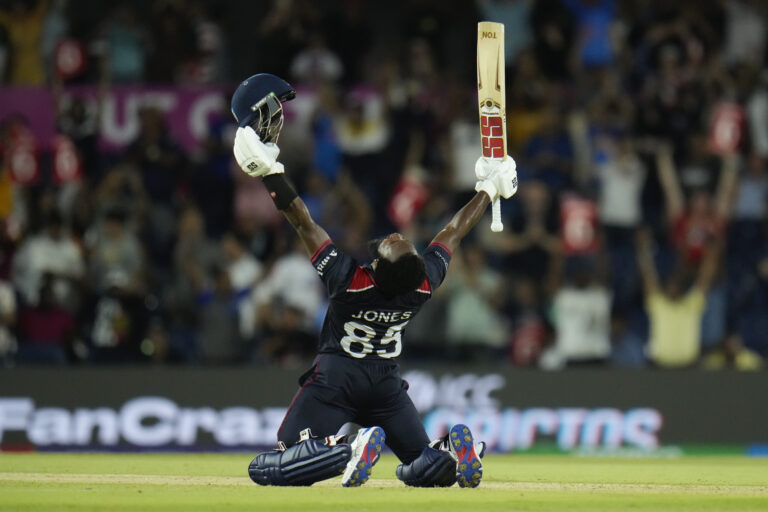Controversies That Shaped Cricket
Reddy Anna Book, Reddy Book Club: The controversial tactics employed by the English cricket team during the 1932-33 Ashes series in Australia sparked international outcry and forever changed the dynamics of the sport. The strategy involved bowlers deliberately targeting the body of Australian batsmen with short-pitched deliveries, aiming to restrict their ability to play aggressive shots.
The aggressive and physically threatening nature of the bowling technique, known as “bodyline,” led to heated debates about the spirit of the game and raised concerns about player safety. The series not only strained relations between England and Australia but also prompted the Marylebone Cricket Club (MCC) to subsequently introduce new laws to regulate the tactics used by bowlers on the field.
Match-fixing Scandals
Match-fixing scandals have plagued the world of cricket for many decades, shaking the very core of the sport. These scandals have brought immense shame and disgrace to players, teams, and the entire cricketing community. The act of manipulating the outcome of matches for financial gain has tarnished the integrity of cricket and caused a significant loss of trust among fans.
The match-fixing scandals have not only stained the reputation of cricket but have also led to severe consequences for those involved. Players found guilty of fixing matches have faced lifetime bans, financial penalties, and permanent damage to their careers. The repercussions of match-fixing scandals have served as a harsh lesson for the cricketing world, emphasizing the importance of maintaining transparency, honesty, and fair play in the game.
Ball-tampering Incidents
Ball-tampering incidents in cricket have been a source of controversy and debate among players, officials, and fans alike. The act of tampering with the condition of the ball, whether through the use of foreign objects or altering its surface, is considered a violation of the laws of the game and a form of cheating. Players caught engaging in such practices have faced sanctions ranging from fines to match bans.
Instances of ball-tampering have tarnished the reputation of teams and players, leading to public outcry and calls for stricter enforcement of regulations. The use of tactics to gain an unfair advantage through altering the ball’s condition has been a persistent issue in cricket, prompting governing bodies to take a firm stance against such behavior.
The Rebel Tours
The Rebel Tours were a source of controversy in the world of cricket. These tours involved teams of players who defied international cricket authorities to tour countries that were under apartheid rule in South Africa. This caused widespread outrage and prompted the imposition of bans on the rebel players, leading to a significant disruption in the cricketing landscape.
The impact of the Rebel Tours was multi-faceted, affecting not only the careers of the players involved but also the political landscape of the time. The tours highlighted the deep-seated issues of racism and segregation in sports and forced cricketing bodies to take a stand against such practices. The legacy of the Rebel Tours serves as a reminder of the power dynamics at play in the world of sports and the importance of upholding principles of equality and fairness.
The Chucking Controversy
The controversy surrounding chucking in cricket arises when bowlers are suspected of straightening their arms illegally during the delivery. This action can provide them with an unfair advantage by allowing them to generate more speed and spin on the ball. The issue has been a point of contention in the cricketing world for many years, with governing bodies implementing stricter regulations and technology to combat this practice.
Several high-profile bowlers have been called out for suspected chucking, leading to suspensions and bans from the sport. The debate intensifies when players who possess unique bowling actions are under scrutiny, often sparking heated discussions among fans, players, and officials. The chucking controversy continues to be a divisive topic in cricket, as the game strives to maintain its integrity and uphold fair competition.
The IPL Spot-fixing Scandal
The IPL Spot-fixing Scandal rocked the cricketing world, tarnishing the image of the immensely popular Indian Premier League. Players, team owners, and bookies were involved in a web of corruption that shook the foundations of the sport.
The scandal drew attention to the darker side of cricket, highlighting the need for stricter regulations and ethical standards within the game. Fans were left disillusioned as the integrity of the sport was called into question, leading to calls for greater transparency and accountability in professional cricket.
Doping Allegations
Doping allegations have plagued the world of sports, including cricket, casting a shadow over the integrity of the game. Players have been accused of using performance-enhancing substances to gain an unfair advantage, tarnishing the spirit of fair competition and bringing disrepute to the sport.
These allegations not only damage the reputation of individual players but also raise questions about the effectiveness of anti-doping policies within the cricketing community. It is crucial for governing bodies to take a strong stance against doping to preserve the values of sportsmanship and ensure a level playing field for all athletes.
The Kerry Packer World Series Cricket
The transformation sparked by the Kerry Packer World Series Cricket was unparalleled in the history of the sport. Packer’s breakaway league challenged the established order of cricket, introducing concepts like colored clothing, floodlit matches, and white balls that are now standard in the game. The World Series Cricket not only revolutionized the way cricket was played but also laid the foundation for the commercialization of the sport, setting a new benchmark for cricket broadcasting and player salaries.
The Monkeygate Scandal
The Monkeygate Scandal involved a heated clash between Australian cricketer Andrew Symonds and Indian spinner Harbhajan Singh during the 2007-2008 Test series. Symonds claimed that Harbhajan racially abused him, sparking a major controversy that overshadowed the cricketing action on the field. The incident led to a disciplinary hearing, where Harbhajan was initially charged with making a racist comment towards Symonds.
The scandal caused a rift between the two cricketing nations, with India threatening to pull out of the tour if Harbhajan was not acquitted of the charges. The matter was eventually settled when Harbhajan was found guilty of using abusive language but was cleared of the racism allegations due to lack of evidence. The fallout from the Monkeygate Scandal highlighted the tensions and sensitivities that can arise in the intense and competitive world of international cricket.
The Underarm Bowling Incident
The infamous underarm bowling incident remains etched in cricketing history as one of the most controversial moments to have occurred on the field. It took place during a match between Australia and New Zealand in 1981, with New Zealand needing a six off the last ball to tie the match. In a move that sparked outrage and criticism, the Australian captain instructed his brother, the bowler, to deliver the ball underarm along the ground, ensuring the Kiwi batsman had no chance of hitting a boundary.
The underarm delivery was legal at the time but considered against the spirit of the game. The incident led to widespread condemnation and rule changes to prevent such tactics in the future. It soured the relations between the two cricketing nations and left a lasting impact on the perception of fair play in the sport.
What was the Underarm Bowling Incident?
The Underarm Bowling Incident refers to a controversial incident in cricket history where the Australian team under captain Greg Chappell instructed his brother Trevor Chappell to bowl the last ball of a One Day International match against New Zealand underarm, which was considered unsportsmanlike.
When did the Underarm Bowling Incident take place?
The Underarm Bowling Incident occurred on February 1, 1981 during a match between Australia and New Zealand at the Melbourne Cricket Ground.
What was the reaction to the Underarm Bowling Incident?
The Underarm Bowling Incident sparked outrage and controversy in the cricketing world, with many condemning the unsportsmanlike behavior of the Australian team. It led to changes in the rules of cricket to prevent such incidents from happening again.
Did the Underarm Bowling Incident have any long-term repercussions?
The Underarm Bowling Incident tarnished the reputation of the Australian team and remains a controversial moment in cricket history. It also led to a strained relationship between the Australian and New Zealand cricket teams for some time.
Has there been any similar incident in cricket since the Underarm Bowling Incident?
The Underarm Bowling Incident remains one of the most infamous incidents in cricket history, and while there have been other controversies and scandals in cricket, nothing quite compares to the unsportsmanlike act of bowling underarm in a match.







